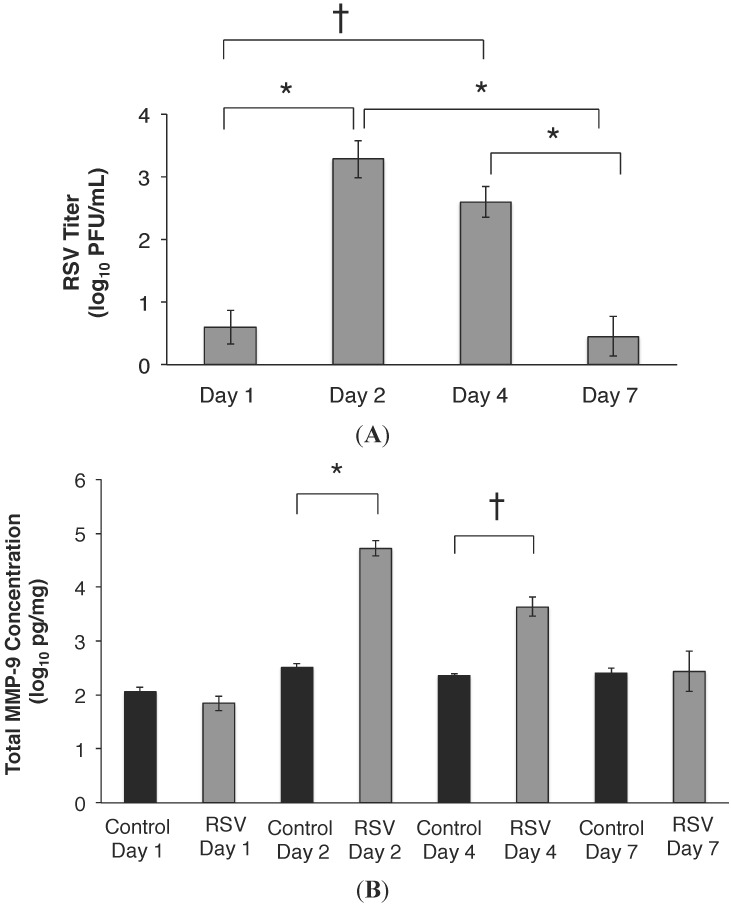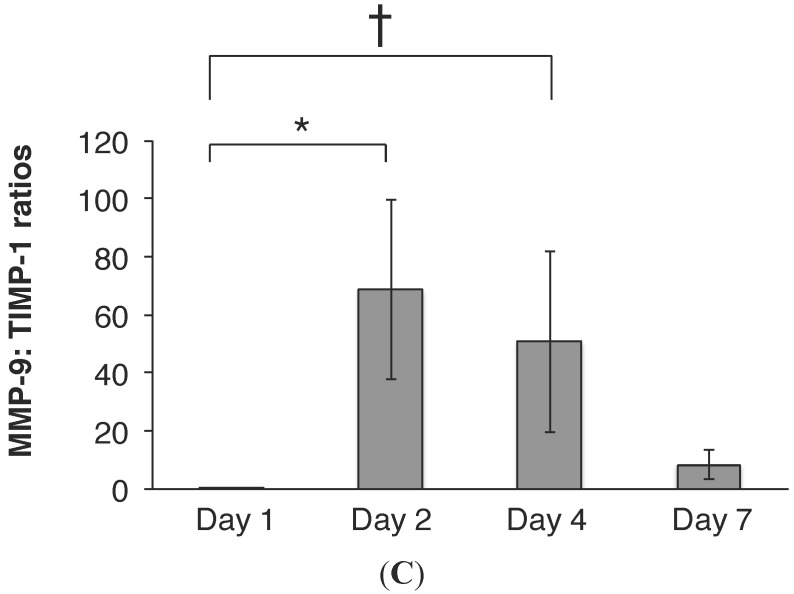Figure 3.
(A) RSV titer PI in wild-type (WT) C57BL/6 mice with time of infection. RSV was detected consistently in BALF by 24 h after inoculation. The highest viral titer was measured on day 2 PI (3.2 ± 0.3 log10 PFU/mL vs. 0.6 ± 0.2 log10 PFU/mL on Day 1), and remained increased on day 4 (2.6 ± 0.2 log10 PFU/mL). By day 7, the viral titer was decreased by approximately 3 logs (0.4 ± 0.3 log10 PFU/mL), and similar to that detected on day 1. n =20 mice; 5 mice per group x 4 separate experiments, for each time point. Data represent mean ± SEM. * p < 0.001 and † p = 0.004 as indicated, by ANOVA followed by Tukey-Kramer multiple comparisons test; (B) Total MMP-9 concentration peaks on day 2 post RSV inoculation. Total MMP-9 concentration measured in BALF of RSV infected WT mice peaked on day 2 PI, and was 2.2 logs higher compared to sham-infected controls. MMP-9 levels remained increased on day 4 PI, albeit lower than day 2 PI. By day 7 PI, similar MMP-9 concentrations were measured in RSV infected and control mice. Data represent mean ± SEM. * p < 0.0001 and † p < 0.005 as indicated, by ANOVA followed by Tukey-Kramer multiple comparisons test; (C) MMP-9:TIMP-1 ratios in vivo post RSV infection. TIMP-1 is a natural inhibitor for MMP-9 activity in vivo, and MMP-9:TIMP-1 ratio was determined at all time points post RSV infection. The highest MMP-9:TIMP-1 ratios were measured on days 2, and remained high on 4 PI, correlating with the increased MMP-9 concentrations measured in the lung (Figure 3B). MMP-9:TIMP-1 ratio was decreased by greater than 50% by day 7 PI. Data represent mean ± SEM. * p = 0.005 and † p < 0.02 as indicated, by ANOVA followed by Tukey-Kramer multiple comparisons test.


